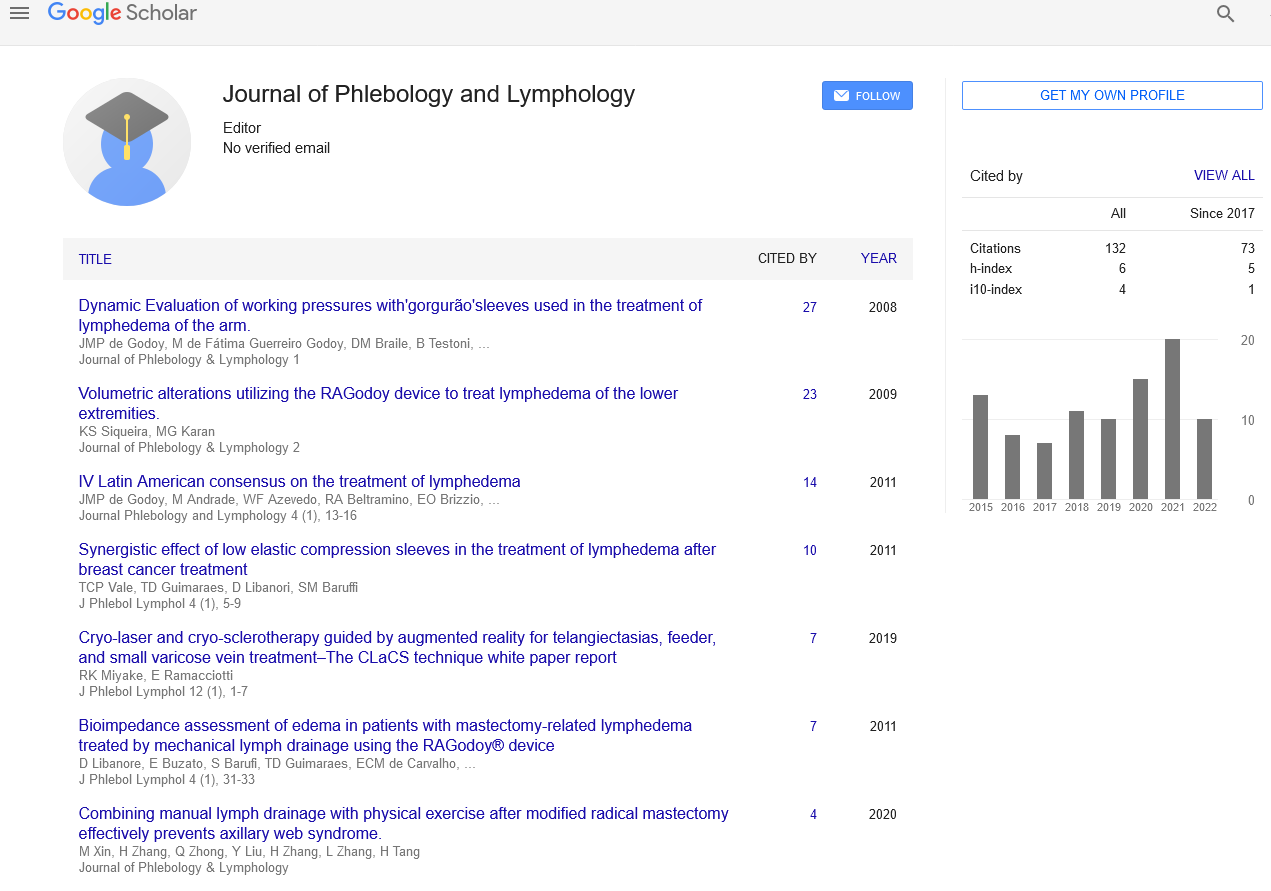Lymphatic filariasis
Received: 07-Apr-2021 Accepted Date: Apr 21, 2021; Published: 28-Apr-2021, DOI: 10.37532/1983-8905.2021.14(3).1
Citation: Schotzau A. Lymphatic filariasis. J Phlebol Lymphol. 2021;14(3):e001.
This open-access article is distributed under the terms of the Creative Commons Attribution Non-Commercial License (CC BY-NC) (http://creativecommons.org/licenses/by-nc/4.0/), which permits reuse, distribution and reproduction of the article, provided that the original work is properly cited and the reuse is restricted to noncommercial purposes. For commercial reuse, contact reprints@pulsus.com
Description
Lymphatic filariasis, considered around the world as a dismissed tropical sickness (NTD), is a parasitic infection brought about by infinitesimal, string like worms. The grown-up worms just live in the human lymph framework. The lymph framework keeps up the body's liquid equilibrium and battles contaminations. Lymphatic filariasis is spread from one individual to another by mosquitoes.
Individuals with the infection can experience the ill effects of lymphedema and elephantiasis and in men, growing of the scrotum, called hydrocele. Lymphatic filariasis is a main source of perpetual incapacity around the world. Networks habitually avoid and reject ladies and men distorted by the sickness. Influenced individuals much of the time can't work in view of their inability, and this damages their families and their networks.
The sickness spreads from one individual to another by mosquito chomps. At the point when a mosquito chomps an individual who has lymphatic filariasis, tiny worms circling in the individual's blood enter and taint the mosquito. At the point when the contaminated mosquito chomps someone else, the infinitesimal worms pass from the mosquito through the skin, and travel to the lymph vessels. In the lymph vessels they develop into grown-ups. A grown-up worm lives for around 5–7 years. The grown-up worms mate and delivery a large number of minuscule worms, called microfilariae, into the blood. Individuals with the worms in their blood can give the disease to others through mosquitoes.
Lymphatic filariasis causes blockage of the lymphatic channels, prompting growing and possible scarring of the legs, known as elephantiasis, and in men, to expanding of the scrotum, or hydrocele. These side effects are amazingly impairing. These conditions are additionally distorting, and, in certain networks all throughout the planet, individuals with the sickness might be disregarded.
Internationally, the infection influences in excess of 120 million individuals. The sickness has been destroyed from the United States, with the last realized case happening during the 1920s. Lymphatic filariasis is found in the jungles of Asia, Africa, the Pacific, the Caribbean, and South America. Haiti, the Dominican Republic, Guyana, and Brazil are the influenced nations in the Americas. Voyagers to influenced nations ought to be watchful about mosquito security Rehashed mosquito chomps more than a while to years are expected to get lymphatic filariasis. Individuals living for quite a while in tropical or sub-tropical regions where the sickness is normal are at the most serious danger for disease. Momentary sightseers have an okay. A contamination will appear on a blood test. Most contaminated individuals are asymptomatic and won't ever create clinical indications, regardless of the way that the parasite harms the lymph framework. A little level of people will create lymphedema or, in men, an expanding of the scrotum called hydrocele. Lymphedema is brought about by inappropriate working of the lymph framework that out comes in liquid assortment and growing. This for the most part influences the legs, yet can likewise happen in the arms, bosoms, and genitalia. A great many people build up these clinical signs a very long time in the wake of being tainted.
The growing and the diminished capacity of the lymph framework make it hard for the body to battle germs and diseases. Influenced people will have more bacterial diseases in the skin and lymph framework. This causes solidifying and thickening of the skin, which is called elephantiasis. A large number of these bacterial diseases can be forestalled with fitting skin cleanliness and care for wounds. Men can create hydrocele or growing of the scrotum because of contamination with one of the types of parasites that causes LF, explicitly W. bancrofti.
Filarial disease can likewise cause tropical aspiratory eosinophilia disorder. Eosinophilia is a higher than ordinary degree of illness battling white platelets, called eosinophils. This condition is normally found in tainted people in Asia. Clinical appearances of tropical aspiratory eosinophilia disorder incorporate hack, windedness, and wheezing. The eosinophilia is frequently joined by undeniable degrees of Immunoglobulin E (IgE) and antifilarial antibodies.





